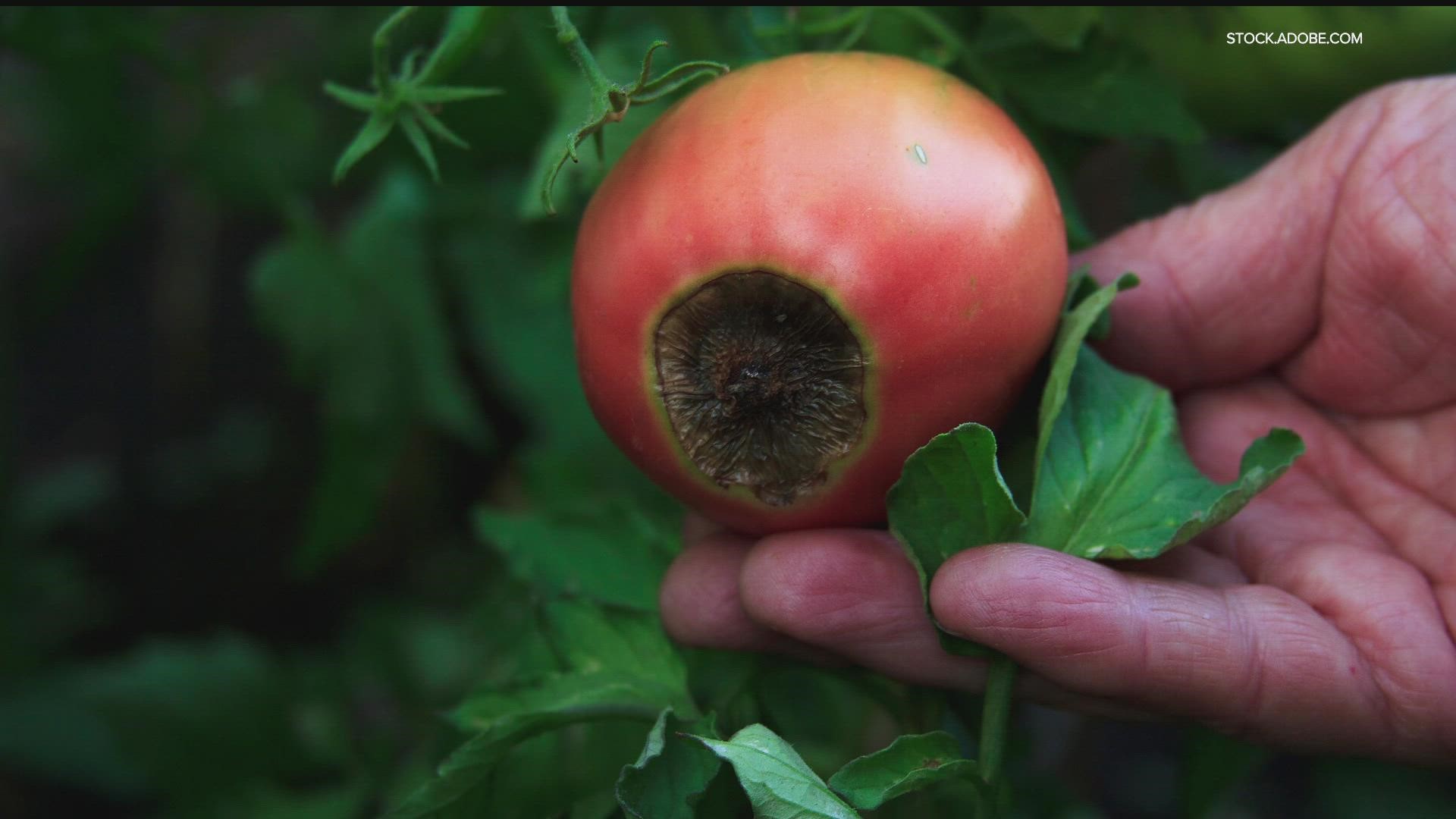GOLDEN VALLEY, Minn. — We’re seeing a lot of sad tomato growers with blossom end rot. The tomato doesn’t form correctly and bacteria and fungi sets in to rot.
While the first advice you will likely hear is a calcium deficiency, that isn’t always the case. In fact, most Minnesota gardens have enough calcium, the problem is more likely water, soil temperature or pH that prevents the plant from using the calcium that’s there.
Inconsistent or insufficient watering is the most likely problem this year. Without enough water, the tomato can’t transport the calcium in the soil up into the plant.
A soil temperature less than 50 degrees will have a similar effect. Don’t plant your tomatoes too early in spring. Use a soil thermometer early in the day and plant only when it reads greater than 50 degrees on a regular basis.
You might get the advice to add lime. This is a good remedy only if your soil pH is too low. The ideal pH range for tomatoes is 6.2 to 7.0. A soil test will tell you the pH of your garden. Adding lime and increasing the pH above that range will create new problems with other nutrients the plant needs.
Adding eggshells is another common piece of advice. And while they do eventually add calcium to the soil, they take too long to decompose to be an effective solution… even if you crush or grind them up.
Calcium nitrate is a liquid fertilizer sold in most garden centers that has an immediate effect and does not alter the pH of the soil. Be sure to follow the label instructions.
Blossom end rot doesn’t just affect tomatoes… peppers and zucchini are other common victims. The cause and treatment are the same for all.

